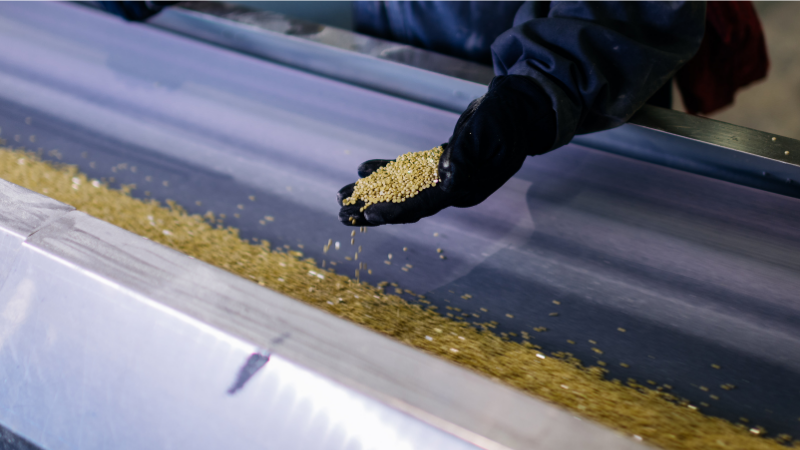The Importance of Clay Quality in Bentonite Sulfur Fertilizer

Welcome to the first Keg River blog. This is something new to us. And maybe even to you as a fertilizer dealer, retailer, agronomist or grower with an interest in sulfur as a crop nutrient or soil amendment product.
Through these blogs and vlogs (video blogs), we plan to share our years of first-hand knowledge and insights around bentonite sulfur fertilizers: from how they’re made to how they work in the fields to what they cost to make.
This first blog is a bit of a primer on a topic near and dear to us: clay.
It all starts – and ends – with the quality of the clay
Clay quality will be a big focus of our articles and videos. It’s the single most important factor in the performance of bentonite sulfur.
Bentonite is the clay of choice for degradable sulfur fertilizer. A fine clay with high montmorillonite composition, Bentonite’s chemical characteristics make it ideal for absorbing moisture and swelling. These qualities make bentonite a key ingredient in many applications beyond sulfur fertilizer: including drilling mud, health & beauty products and even cat litter!
The role of the bentonite clay
Like many things in life, you only get out what you put in!
The bentonite’s ability to absorb moisture, and swell is the mechanism that breaks up the pastille in the soil and releases the elemental sulfur when moisture is present. If the sulfur doesn’t degrade into fine particles that allow bacteria to convert it to plant-available sulfate – it’s worthless the grower and their crops.
A premium clay optimizes breakdown of the pastille and the sulfur particles within. This exposes a larger surface area of sulfur to the bacteria, which speeds up the oxidation process.
The amount of clay in a bentonite sulfur product also improves performance. The higher the bentonite clay content, the better it will degrade. This is why a 0-0-0-85S product with 15% bentonite content will offer faster and more complete breakdown compared to a 0-0-0-90S product with 10% bentonite.
Using a really good clay also helps to produce harder, more durable pastilles that generate less sulfur dust in the handling process. This results in a safer product and more comfortable work environment for fertilizer facility employees.
Not all bentonite clay is created equal
While drilling mud and cat litter can be made with low-quality, lower-cost bentonite clays, a bentonite sulfur fertilizer requires the highest-quality clay for maximum absorption, swelling and degradability. Top-grade raw bentonite is available through a select number of North American suppliers.
Bentonite sulfur fertilizer manufacturers such as Keg River, use only 100% premium bentonite clay to ensure maximum absorption and swelling characteristics and more consistent degradability.
However, it is not uncommon for some manufacturers to cut their costs by blending a high-quality bentonite clay with a lower-quality clay (such as a drilling mud or kitty litter grade product). Unfortunately, the performance of the high-quality clay will be reduced by the presence of the lower quality ingredient – resulting in inconsistent breakdown.
Still other manufacturers will forego using a top-grade bentonite entirely – and make their products using a lower grade bentonite. While it may look the same in the tote, farmers won’t see the desired results in their fields – as much of the product wont fully degrade. If this happens, the elemental sulfur nutrient can end up trapped in the clay, and provide little to no benefit to crops.
Ensure your customers are getting the sulfur they paid for
When purchasing a bentonite sulfur for your fertilizer facility or network, ask the manufacturer where they get their clay. Inquire if it is all the same grade or if it is blended. If they are not using 100% top-grade clay, prepare to lower your expectations when it comes to product performance.
In a future post, we’ll show you a simple test you can perform to spot-check samples of a manufacturer’s product to ensure they are swelling as they should. Comparing products side by side can be quite eye-opening. There are also many other factors that impact clay performance. Stay tuned.




